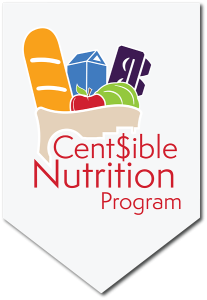While insects can damage plants, they aren’t always the cause behind plant issues. Disease can also be a cause. Plant diseases can infect one or many parts of a plant including leaves, stems, roots, flowers, and fruit. Mild infections stress the plant and reduce the amount it produces while more severe infections can kill it. Fungi, bacteria, or viruses often cause the infection in the plant, causing symptoms you can see including:
- Spotted leaves or produce
- Wilted leaves
- Yellow or brown leaves
Plant disease occurs when bacteria or fungi meets an at-risk plant, when the environmental conditions are right for the disease to take off. This article will walk you through ways to manage plant diseases.
Managing Plant Diseases
Managing plant diseases depends on the type of disease and the plant infected. However, there are five general ways to manage plant diseases. Using several of these methods together is often the best way to manage and prevent plant diseases.
- Sanitation
- Remove infected plants from the garden to prevent spread of the disease.
- Grow disease resistant plants
- Many plant species are bred for disease resistance. You can grow plant varieties that resist common diseases that normally affect that plant.
- Cultural Controls
- These controls work to prevent an environment that encourages diseases while improving the conditions for healthy plants. Cultural controls include:
- Rotating plants around the garden from year to year.
- Avoiding working in the garden when the plants and soil are wet. This can more easily spread disease.
- Keeping water off of leaves by hand watering at the bottom of plants or using a drip system. Watering methods that get the leaves wet can encourage disease.
- Watering enough and use fertilizer appropriately for healthy plants.
- Managing other pests, like weeds and insects.
- These controls work to prevent an environment that encourages diseases while improving the conditions for healthy plants. Cultural controls include:
- Biological Controls
- Biological controls are most common when it comes to managing insect pests. However, sometimes certain fungi and bacteria, as well as some insects can help manage plant diseases. Contact your local Extension Office for more information.
- Chemical Controls
- Pesticides, including some organic products, are sometimes used to control plant diseases. They can be effective, but it’s important to know what the disease is before choosing a chemical.
- When using chemicals, always read and follow the label carefully. Remember to wear protective gear, if required.
Diagnosing Sick Plants
Not sure what’s wrong with your plant? UW Extension can help you in person at your local UW Extension office. You can also Ask an Expert online or send plant samples into the UW Plant Disease Diagnostic Clinic.
Happy gardening!
Information summarized from UW Extension publications by Katie Shockley, Writer/Editor, University of Wyoming Extension Communications & Technology with assistance from Chris Hilgert, University of Wyoming Extension Horticulture Specialist and Master Gardener Statewide Program Coordinator.
Share
Want more on gardening? Check out UWE’s Lawn & Garden podcast.
While insects can damage plants, they aren’t always the cause behind plant issues. Disease can also be a cause. Plant diseases can infect one or many parts of a plant including leaves, stems, roots, flowers, and fruit. Mild infections stress the plant and reduce the amount it produces while more severe infections can kill it. Fungi, bacteria, or viruses often cause the infection in the plant, causing symptoms you can see including:
- Spotted leaves or produce
- Wilted leaves
- Yellow or brown leaves
Plant disease occurs when bacteria or fungi meets an at-risk plant, when the environmental conditions are right for the disease to take off. This article will walk you through ways to manage plant diseases.
Managing Plant Diseases
Managing plant diseases depends on the type of disease and the plant infected. However, there are five general ways to manage plant diseases. Using several of these methods together is often the best way to manage and prevent plant diseases.
- Sanitation
- Remove infected plants from the garden to prevent spread of the disease.
- Grow disease resistant plants
- Many plant species are bred for disease resistance. You can grow plant varieties that resist common diseases that normally affect that plant.
- Cultural Controls
- These controls work to prevent an environment that encourages diseases while improving the conditions for healthy plants. Cultural controls include:
- Rotating plants around the garden from year to year.
- Avoiding working in the garden when the plants and soil are wet. This can more easily spread disease.
- Keeping water off of leaves by hand watering at the bottom of plants or using a drip system. Watering methods that get the leaves wet can encourage disease.
- Watering enough and use fertilizer appropriately for healthy plants.
- Managing other pests, like weeds and insects.
- These controls work to prevent an environment that encourages diseases while improving the conditions for healthy plants. Cultural controls include:
- Biological Controls
- Biological controls are most common when it comes to managing insect pests. However, sometimes certain fungi and bacteria, as well as some insects can help manage plant diseases. Contact your local Extension Office for more information.
- Chemical Controls
- Pesticides, including some organic products, are sometimes used to control plant diseases. They can be effective, but it’s important to know what the disease is before choosing a chemical.
- When using chemicals, always read and follow the label carefully. Remember to wear protective gear, if required.
Diagnosing Sick Plants
Not sure what’s wrong with your plant? UW Extension can help you in person at your local UW Extension office. You can also Ask an Expert online or send plant samples into the UW Plant Disease Diagnostic Clinic.
Happy gardening!
Information summarized from UW Extension publications by Katie Shockley, Writer/Editor, University of Wyoming Extension Communications & Technology with assistance from Chris Hilgert, University of Wyoming Extension Horticulture Specialist and Master Gardener Statewide Program Coordinator.
Additional Resources
Learn more about managing plant diseases and issues with these resources from the University of Wyoming Extension:
- Barnyards & Backyards Live: Plant Diseases in the Garden
- Plant Disease Diagnostic Clinic
- UWE Publication: An Introduction to Plant Pathology & Plant Disease Management
- Nonchemical Disease Control Resources from Colorado State University Extension
- Preventing & Managing Plant Diseases from University of Missouri Extension
- NEW Resource of Interest! The Lawn & Garden Podcast from the University of Wyoming Extension
Next up: All Things Lettuce + a recipe [Coming July 31]


